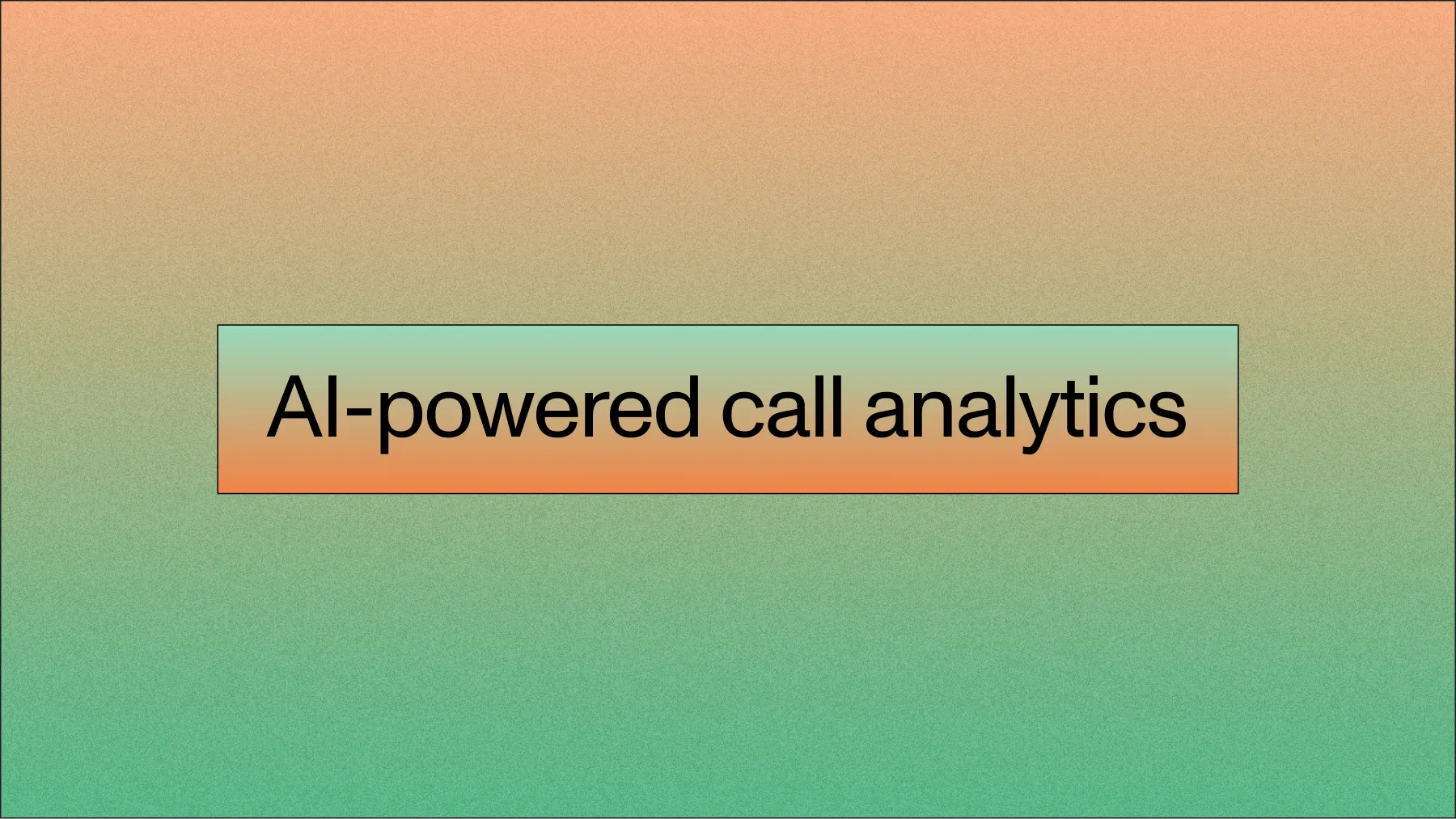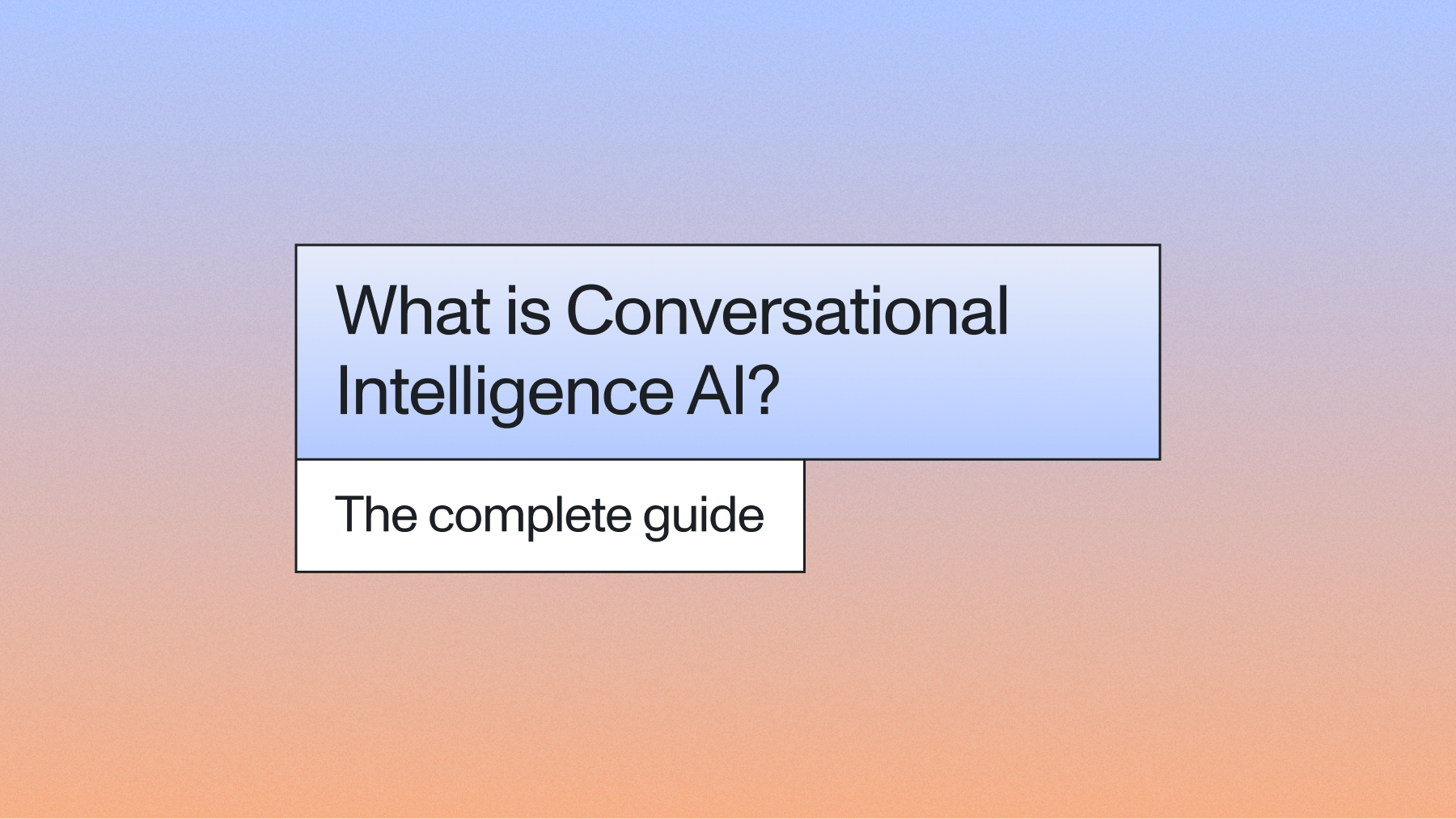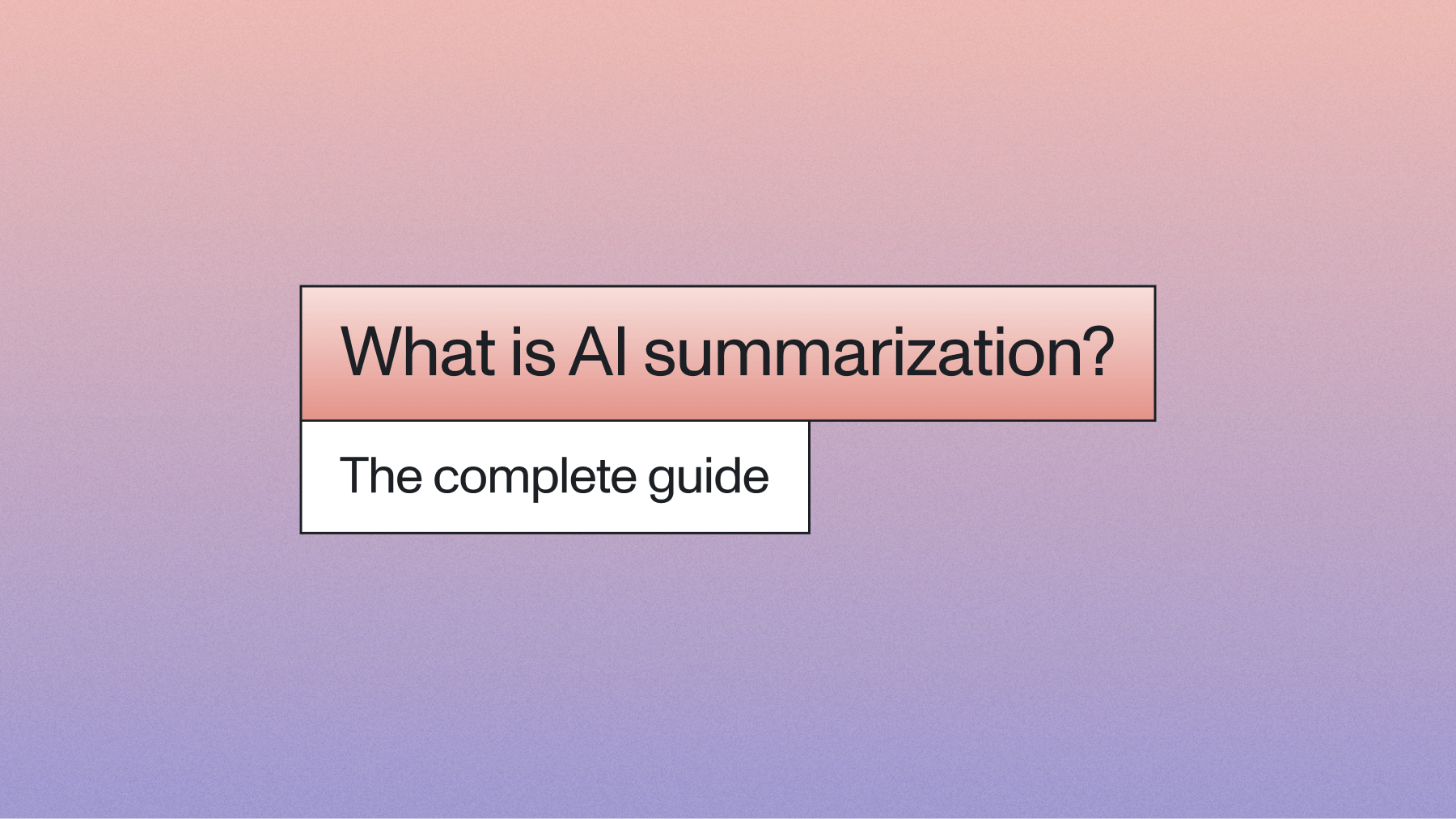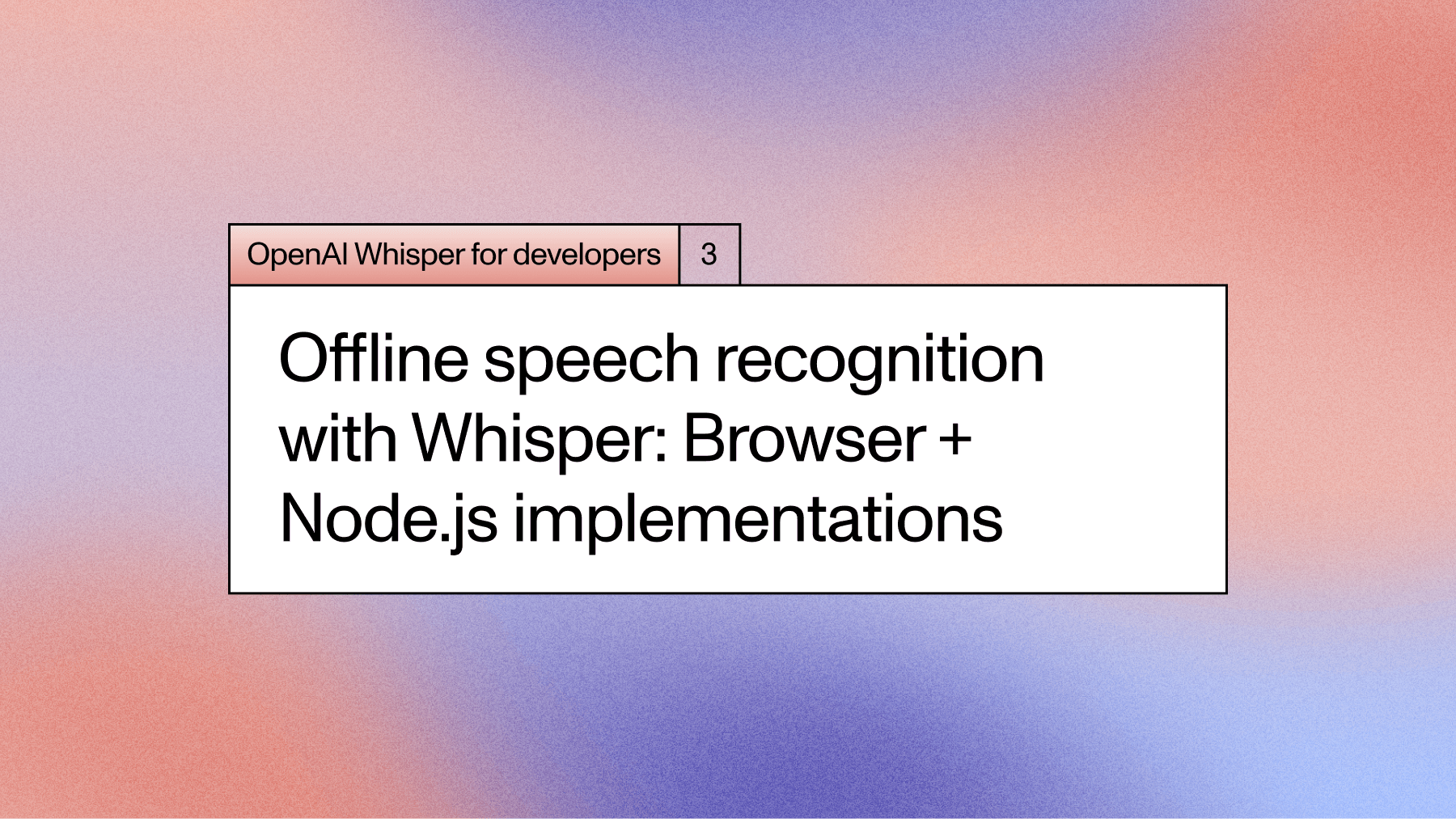The ongoing need for human-in-the-loop in conversation intelligence
This blog post further examines findings from our 2025 Insights Report: The State of Conversation Intelligence regarding the ongoing need for a human-in-the-loop process.

.png)

Our recently published 2025 Insights Report: The State of Conversation Intelligence surveyed industry-leading founders, product leaders, and team engineers to uncover how they’re thinking about, talking about, and using conversation intelligence today.
In this blog post, we’ll discuss one of the common challenges many interviewees cited: the ongoing need for human-in-the-loop processes.
What is human-in-the-loop?
Human-in-the-loop refers to a machine learning approach where humans provide input—typically through training and evaluation steps—that affects the lifecycle of artificial intelligence systems.
Human-in-the-loop might look like humans labeling training data, evaluating an AI model's performance, and/or providing feedback to the AI model through active or reinforcement learning.
What are the potential benefits of using human-in-the-loop?
Product teams cite a few key benefits to using human-in-the-loop processes, including
- Increased workflow accuracy
- Better product reliability
- Improved user trust
- Increased workflow transparency
- Better bias mitigation
- Ability to adapt more quickly to customer feedback and evolving external conditions
What are the potential challenges of using human-in-the-loop?
Using a human-in-the-loop approach when building conversation intelligence products can also introduce several challenges across scalability, cost, consistency, and trust.
- Scalability: Human involvement doesn’t scale easily. As the number of conversations increases (think thousands of hours of calls or chats), reviewing or labeling each one becomes impractical. This can limit real-time feedback, slow iteration cycles, and restrict coverage across datasets.
- Cost and time: Human involvement is expensive and time-consuming and hiring, training, and managing human reviewers adds overhead. This leads to slower development cycles, higher operational costs, and less agile product updates.
- Inconsistency and subjectivity: Human annotators can interpret the same conversation differently—especially for sentiment, intent, or emotion classification. This reduces model training reliability, introduces bias, and leads to noisy or low-quality labels.
- Privacy and Compliance Risks: Involving humans means exposing potentially sensitive data—like PII, financial details, or medical information. This triggers regulatory concerns (HIPAA, GDPR) and requires robust redaction, audit, and security protocols.
What are conversation intelligence leaders saying about human-in-the-loop processes?
Conversation intelligence leaders cite that many of their teams still require manual review to validate AI outputs, especially in regulated workflows, though many are confident that fully automated solutions may emerge soon.
Many of those interviewed see continued human oversight as critical for quality-tuning, identifying gaps to address, and providing feedback mechanisms.
Here’s what some of them had to say:
“Companies are still not confident in leaving everything to AI.”
— Jeff Whitlock, founder and CEO at Grain
"I see humans staying close to the process from a quality assurance standpoint. e.g. ensuring that calls are being graded properly, ensuring that analytics are being properly monitored, trend analysis, etc."
— Brock Jackson, Co-founder at Calldrip
"Human-in-the-loop is a critical piece for now which helps tune and refine conversational assistants. We can use this as a feedback mechanism to our AI systems to improve the overall experience and identify gaps to address."
— Samir Sen, Co-founder and CEO at Flair
“…Due to hallucinations, companies are still not confident in leaving everything to AI. A human in the loop delivers operational efficiency, while promising an opportunity to catch aberrations well within time."
— Tushar Jain, Co-founder at enthu.ai
The importance of transcription accuracy
Speech-to-text accuracy doesn’t just impact live call or meeting transcripts—it impacts every workflow downstream that depends on that transcript, including:
- Agent coaching
- Agent assist
- Call summaries
- Action items
- Risk scoring
- Sentiment analysis
- Compliance issues
And more.
Implementing industry-leading transcription accuracy can help minimize the need for human-in-the-loop processes, especially as accuracy increases even further.
For example, AssemblyAI’s new streaming speech-to-text model captures critical details like emails, phone numbers, product names, and more at high accuracy, ensuring workflows that depend on those transcripts are highly accurate too.
Final thoughts
As the field of conversation intelligence continues to evolve, the role of humans-in-the-loop may decrease or eventually be eliminated altogether.
However, industry leaders agree that human-in-the-loop processes remain a key component of today’s conversation intelligence workflows, especially for ensuring quality, trust, and adaptability in high-stakes or fast-changing environments.
Product leaders looking to minimize using humans-in-the-loop should prioritize integrating the most accurate speech transcription model possible, as this will serve as the foundation for all other workflows.
“Everything in statistics comes down to garbage in and garbage out. So depending on the quality of your natural language processing and your speech-to-text, that's going to impact the quality of your analysis,” explains Grain’s co-founder Mike Adams.
Lorem ipsum dolor sit amet, consectetur adipiscing elit, sed do eiusmod tempor incididunt ut labore et dolore magna aliqua. Ut enim ad minim veniam, quis nostrud exercitation ullamco laboris nisi ut aliquip ex ea commodo consequat. Duis aute irure dolor in reprehenderit in voluptate velit esse cillum dolore eu fugiat nulla pariatur.






